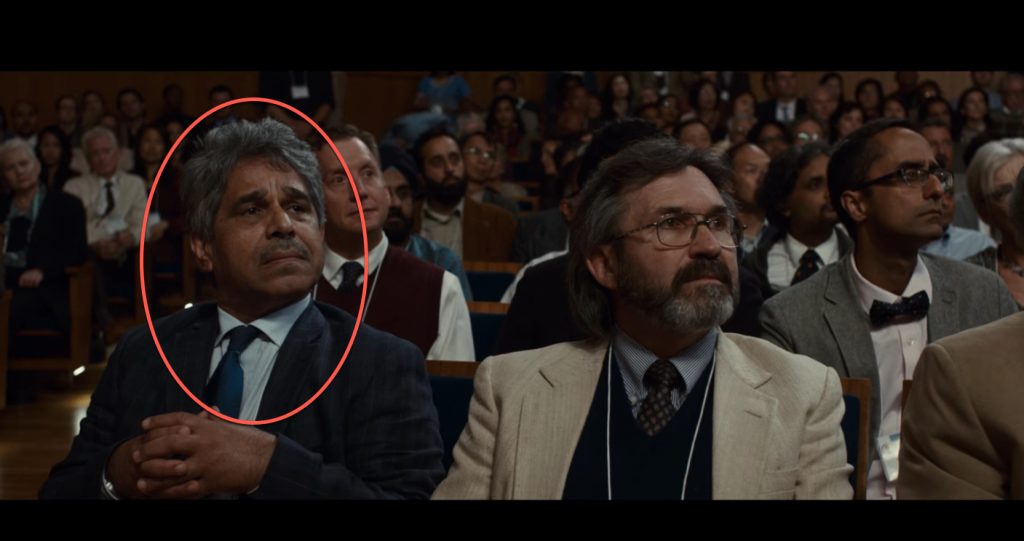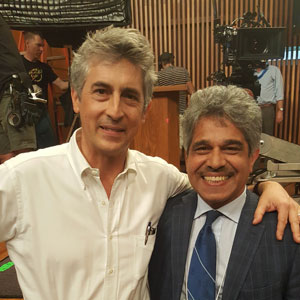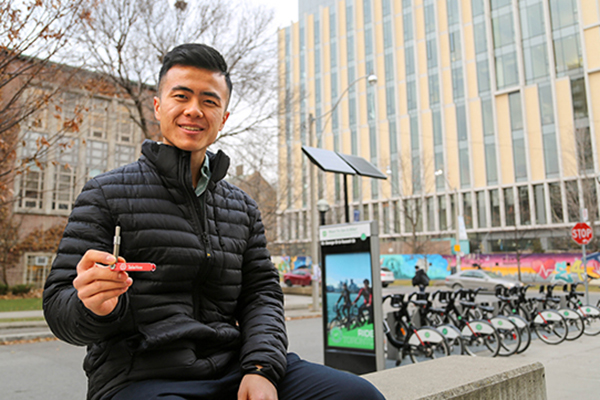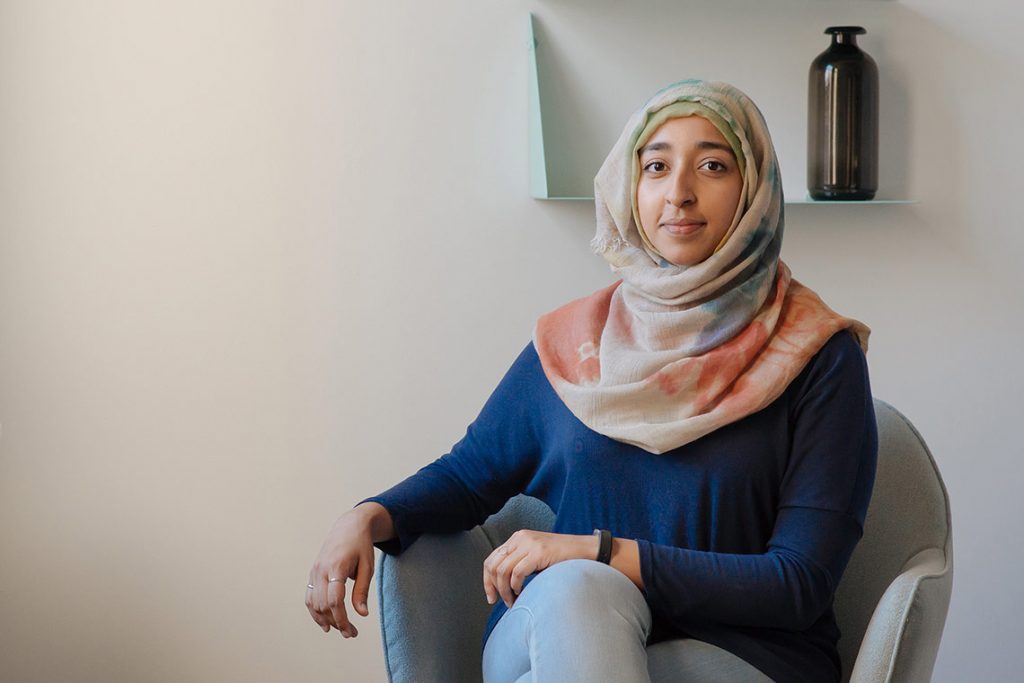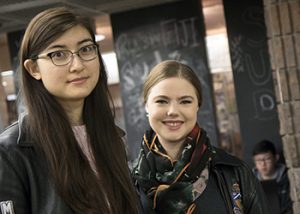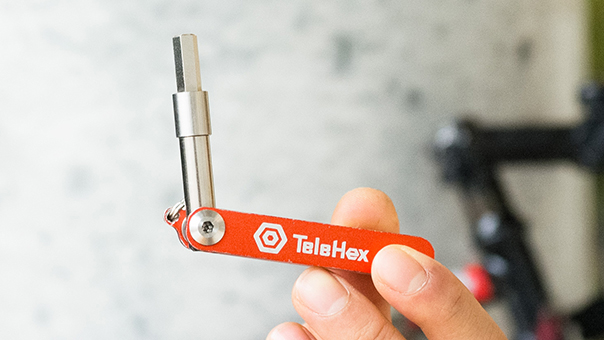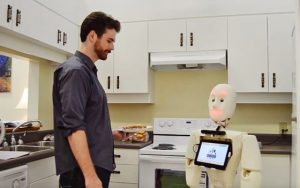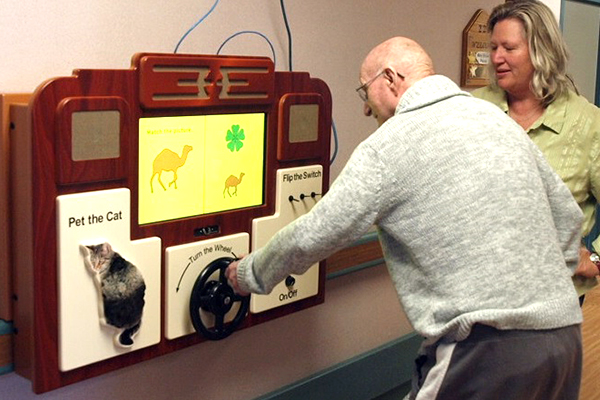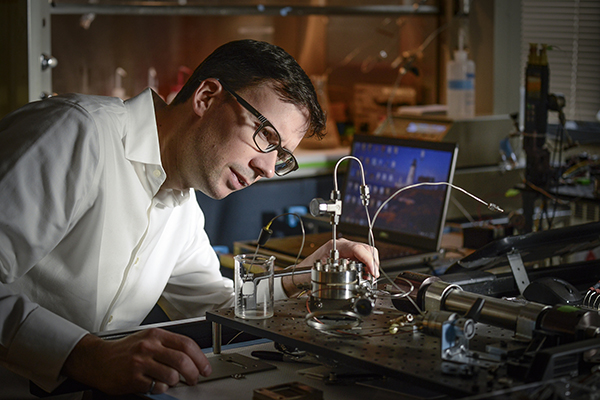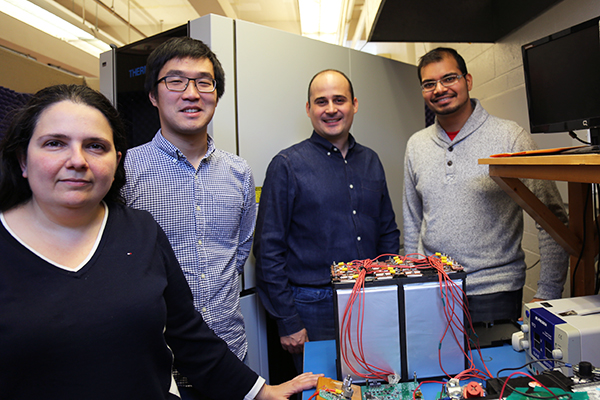
An MIE team led by Dean Cristina Amon, in collaboration with ECE researchers, wants to improve battery technology. From left: Daniela Galatro (MIE PhD 2T1), Zhe Gong (ECE MASc 1T8), Carlos Da Silva (MIE PhD 1T6), Kshitij Gupta (MIE MASc 1T9).
December 14, 2017 – Researchers from MIE and ECE are working collaboratively to design the automotive battery of the future.
The four-year multidisciplinary research project is bringing together Professor Olivier Trescases (ECE), a power electronics expert; Dean Cristina Amon (MIE), a thermal management expert; and Havelaar Canada, a Toronto-based electric vehicle (EV) manufacturer behind the world’s first all-electric pickup truck.
The collaboration will address several key hurdles that currently limit the widespread manufacturing of EVs. Namely, the high cost and limited performance of today’s conservatively-designed lithium battery packs, which ultimately dictate the EV driving range and longevity.
The team aims to design a next-generation battery pack that is lower in cost, is more reliable, safer and lasts longer. A vital part in accomplishing this is by improving the thermal management of batteries. That is where the MIE expertise comes in.
The operating temperature of a lithium battery cell strongly influences its performance and lifespan. High temperatures improve performance but degrade the battery, while low temperatures increase the internal resistance of the battery and lower its capacity.
“Thermal management in batteries is crucial,” said postdoctoral fellow Carlos Da Silva (MIE PhD 1T6). “Whether it’s charging or discharging, the battery heats up. Those temperatures can reach very high, and if we don’t control the temperature, it can be catastrophic for the EV operation,” said Da Silva.
Researchers from MIE, under the supervision of Professor Amon, are developing a cooling system that will tightly control thermal performance, not only to keep the battery temperature within a safe range but to extend the lifespan of the battery.
This project is one of two – conducted under the umbrella of the University of Toronto Electric Vehicle Centre (UTEV) – to secure a $9 million investment through The Natural Sciences & Engineering Research Council (NSERC)’s Collaborative Research and Development Grants awards and Havelaar Canada’s industry contributions.
“We are grateful to have the support of NSERC and Havelaar Canada in providing us with this generous funding,” said Dean Amon. “This investment, and partnership with UTEV, will enable us to address pressing sustainability challenges within the automotive industry, and to further research and development of the electric vehicles of the future.”
Developing the next generation of EV battery packs is already a significant engineering challenge, but the team is also looking to take sustainable innovation even further.
“We want to design battery modules that can be recycled after their capacity is no longer suitable to operate in an EV,” said Da Silva. “We call it the ‘Second Life’ concept, where these batteries will not only be useful for EVs, but that can be recycled to work for stationary applications – such as an energy storage system for houses.”
The researchers have already built two battery module prototypes and plan to have a final version of their first-generation battery pack by early next year. They hope to test this battery pack in Havelaar’s electric pickup truck, before being commercialized.
In order to get there, Da Silva says that the multidisciplinary collaboration between ECE and MIE has been crucial. “This type of project requires very sophisticated and complex knowledge on the electrical side; however this project cannot be done without the mechanical and thermal expertise that we bring.”
